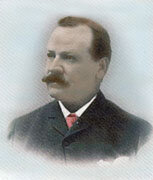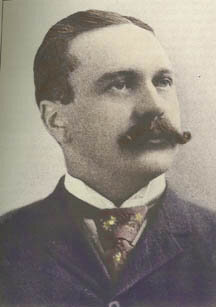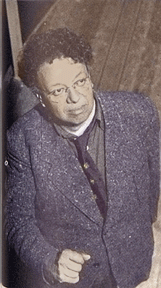
History of San Francisco
San Francisco’s fame is extraordinary for a city of its size.
From its very inception, with people drawn from all over the world to come here to dig for gold, the combination of geography and circumstance have been pure synergy.
The Gold Rush, The Railroad Boom, The Silver Rush, the building of the Golden Gate Bridge, the World’s Fair at Treasure Island, he signing of the United Nations Charter, Summer of Love, building of Transamerica Pyramid, Salesforce Tower, the dot.com boom…are all well-known milestones.
The City has grown and evolves, however it has not lost the powerful elements that made it so attractive in the first place.
As in those early days, San Francisco continues to attract people from many cultures and countries to its beauty and international character.
Rich with diverse geography, architecture and people, there are hills, countless parks, over 350 stairways, its famous Victorian architecture, cable cars, and let’s not forget our mystical “Karl The Fog”.
The ocean is minutes away, and the wilderness of the Marin Headlands is just across the Golden Gate Bridge.
It’s anyone’s guess what the future will bring to San Francisco.
These history makers had the passion, vision and determination that made San Francisco what it is today…
Lillie Coit
Lillie Coit, a flamboyant San Franciscan who came from New York State in 1851 had a passionate respect for firemen and their bravery. My thanks to historian and storyteller, Peter Moylan, of San Francisco Then ... and Now for clarifying the correct stories about the following two art commissions ...
When Lillie died in 1929, she left $125,000 for a beautification project for "the city I love". The City Arts Commission conducted a design contest, which was won by Henry Howard of the architecture firm Blakewell and Brown, which designed City Hall. In the minutes of the commission meetings, it is recorded that he said it was not a fire nozzle, but a "simple fluted shaft". He said there were no prototypes, but there are power plants in Europe that are housed in "simple fluted shafts".
During the same year, 1933, a statue in Washington Square was commissioned with funds that Lillie left for "a statue to honor firemen". It depicts firemen rescuing a young girl.
Sam Brannon
Native to Maine, he sailed into Yerba Buena (San Francisco) on July 31, 1846. He established California’s first flour mill as well as San Francisco’s first newspaper, The California Star, in 1847
Denis Kearny
Considered by some to be a perpetual agitator and nuisance, owner of a small drayage concern and activist, Denis Kearny was the president of the Workingman’s Party of California.
Emperor Norton
Decidedly in a league of his own, this man was a familiar site around town with his two mongrel dogs, Bummer and Lazarus always nearby. Born Joshua Norton, he lost money (and part of his mind) while trying to corner the rice market in 1853. Shortly thereafter he emerged as the self-proclaimed and festooned Norton the First, Emperor of the United States and Defender of Mexico. He made edicts, printed his own money, and wrote to other (real) monarchs with suggestions to them on how to better govern.
Alma de Bretteville
As an ingenue, she posed for the statue which tops the soaring column of the Dewey monument in Union Square. Later in life she married a 50-year old multimillionaire Adolph Spreckels. In 1924, the two of them donated the Palace of the Legion of Honor art museum to the City of San Francisco. Adolph and wife hired École de Beaux Art trained architect George Appelgarth to design an impressive urban estate on Washington Street in Pacific Heights.
Bernard Maybeck
An excerpt from “Bernard Maybeck, the PT Barnum of the Local Set”, by Gray Brechin: “Few architects sustain the popular affection Bernard Maybeck enjoys almost a quarter century after his death. Arthur Brown Jr. may have been more tasteful, Frank Lloyd Wright more revolutionary, but Maybeck’s eccentric work and personality continue to inspire love. Locally, having a Maybeck is equivalent to living in a Monet.” Maybeck came to California in the early 1890’s after short stints in Florida and Kansas City. Although he lived in bohemian Berkeley, close to the stimulus of the University and the patronage of its faculty to hangers-on, he commuted daily to a long series of offices in San Francisco.”
Joseph Strauss
Chicago engineer specializing in building bridges, he opened a San Francisco office in 1904. During his prolific career, he designed and built over 400 bridges of which the Golden Gate Bridge was his crowning achievement. He had advocated building it since 1917. It was completed in 1937.
James C. Flood, “Bonanza Jim”
An Irish New Yorker, he immigrated to San Francisco in 1949 and opened up a saloon with William S. O’Brien. Hearing mining tips in the bar led them to stock brokerage speculation. They ended up controlling Nevada silver mines at the time of the big bonanza, thus his nickname “Bonanza Jim”. Four years after quitting the saloon business these two men had an income of $500,000 per month in 1853. He built an estate in Atherton and a large city home on Nob Hill, now the Pacific Union Club.
Louisa Tetrazzini
Famous opera singer gave a performance with 100,000 reported adoring fans gathered on Market Street at Lotta’s Fountain to hear her sing on Christmas Eve, 1910.
Mark Hopkins
One of the “Big Four”, along with Leland Stanford, Collis Huntington and Charles Crocker, who made their fortunes by building the Central Pacific Railroad.
Jack Kerouac
Born in Massachusetts, he studied at Columbia, associated with the Beat movement. Author of “On the Road” (1957), “The Subterraneans” (1958) and “The Dharma Bums” (1958)m both set in San Francisco…then onto “The Big Sur” (1962).
Michael H. deYoung
Along with is brother Charles, Michael was brought to San Francisco by their father in 1854. Most remembered for his founding of the museum that bears his name, which housed his passionate collection in a building that was built in Golden Gate Park for the California Midwinter Exposition of 1894, using $75,000 that was left over from the event.
Julia Morgan
Daughter of a prosperous Oakland mining engineer, Morgan was the first woman to graduate with a degree in engineering from Berkeley, in 1894. With the encouragement of her teacher, Bernard Maybeck, she became the first woman to enter the revered École des Beaux-Arts in 1897, receiving her diplome in 1901. From the moment she opened her own practice in 1905 until she retired in 1950, she was seldom without work, producing an estimated 1,000 buildings and consistently working 14-hour days.
A.P. Gianinni
Amadeo Peter Giannini was 34 years old when he retired from the wholesale produce business. Sometimes referred to as the “Gentle Giant”, he is known for reaching out to the average working-class person who previously had been ignored by bankers of the day. A. P. used the skills he learned in customer loyalty and satisfaction in the produce business and applied them to the banking arena. He made loans as small as $25 and built what now has become Bank of America.
Mark Hopkins
One of the “Big Four”, along with Leland Stanford, Collis Huntington and Charles Crocker, who made their fortunes by building the Central Pacific Railroad.
Phoebe Apperson Hearst
Matriarch of the Hearst dynasty, reared in Missouri where she married husband George in 1862. George struck it rich in the Nevada mines in 1859. Mrs. Hearst was actively philanthropic., a feminist and suffragist. A few of her projects included underwriting the architectural competition for the Berkeley campus plan; financing archaeological expeditions in Egypt, Italy and Mexico for the University. She lived part time on an elaborate estate in Pleasanton in a mansion built by A. C. Schweinfurth and Julia Morgan. William Randolph Hearst was her only son.
John C Fremont
It all begins with an idea. Maybe you want to launch a business. Maybe you want to turn a hobby into something more. Or maybe you have a creative project to share with the world. Whatever it is, the way you tell your story online can make all the difference.
Andrew Halladie
This man provided us with the beloved cable car. Born in London in 1836 and later adopted his uncle’s surname. He trained as a mechanic and moved to SF in 1852 where he started a company that made wire rope. After working in the mines for a number of years, and developing a “protype” of small cars on cables used in mining, in 1873 he tested the first cable car for people, allowing the development of our hills.
Leland Stanford
Born in Watervliet, New York, he moved to San Francisco in 1852 to join his 5 brothers in a retail grocery store. After moving the business to Sacramento, he became a founder of the Republican Party. One of the “Big Four” (along with Charles Crocker, Mark Hopkins and Collis P. Huntington), and president of the Central Pacific Railroad, he was Governor from 1862-63. He went on to become a US Senator in 1885. He and his wife Jane created an endowment for Stanford University, in honor of their son Leland Stanford Jr, who died in 1884 at the age of 15.
Adolph Spreckels
James Rolph
Albert Pissus
Lotta Crabtree
Shown here arriving at the Pan Pacific Exposition (in the Marina) for “Lotta Crabtree Day”. Lotta was a legendary singer and dancer during a young and vital San Francisco in the 1860’s.
Diego Rivera
Mexican muralist extraordinaire, Diego Rivera displays fine examples of his gift of emotional expressionism in Coit Tower, SF Art School and City College. Painter, draftsman and illustrator, he “gave the people of the Bay Area an inspiring vision of Pan-American Utility…a sweeping synthesis of art…”
Levi Strauss
Born in Buttenheim, Bavaria in 1829, he sailed to New York City with his mother and two sisters in 1847. There he joined his two half brothers in a dry goods store. In 1853 he sailed to SF to set up a dry goods “house” which grew into a prosperous business for 20 years. In 1886, they moved to 14-16 Battery where they remained for 40 years. In 1873 he and tailor/inventor Jacob Davis received a patent for riveting men’s pants. The rest, as they say, is history.
Queen Victoria
It all begins with an idea. Maybe you want to launch a business. Maybe you want to turn a hobby into something more. Or maybe you have a creative project to share with the world. Whatever it is, the way you tell your story online can make all the difference.

























